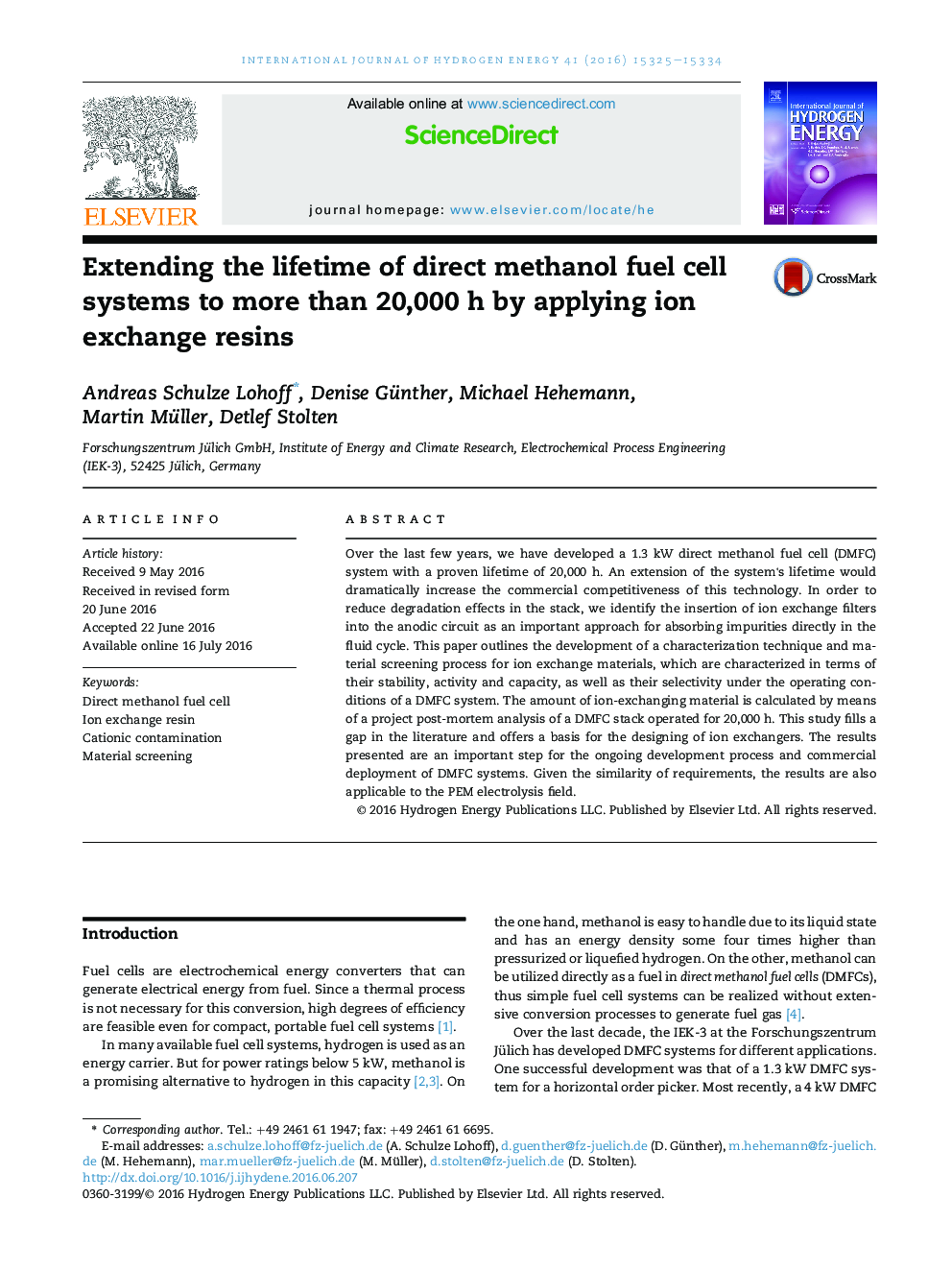| Article ID | Journal | Published Year | Pages | File Type |
|---|---|---|---|---|
| 1270411 | International Journal of Hydrogen Energy | 2016 | 10 Pages |
•We quantify contamination rates for cationic impurities.•We examine the suitability of 11 ion-exchanging materials for use in DMFC systems.•We characterize chemical stability, activity, capacity and selectivity.•We calculate the amount of ion-exchanging material needed in a DMFC system.
Over the last few years, we have developed a 1.3 kW direct methanol fuel cell (DMFC) system with a proven lifetime of 20,000 h. An extension of the system's lifetime would dramatically increase the commercial competitiveness of this technology. In order to reduce degradation effects in the stack, we identify the insertion of ion exchange filters into the anodic circuit as an important approach for absorbing impurities directly in the fluid cycle. This paper outlines the development of a characterization technique and material screening process for ion exchange materials, which are characterized in terms of their stability, activity and capacity, as well as their selectivity under the operating conditions of a DMFC system. The amount of ion-exchanging material is calculated by means of a project post-mortem analysis of a DMFC stack operated for 20,000 h. This study fills a gap in the literature and offers a basis for the designing of ion exchangers. The results presented are an important step for the ongoing development process and commercial deployment of DMFC systems. Given the similarity of requirements, the results are also applicable to the PEM electrolysis field.
